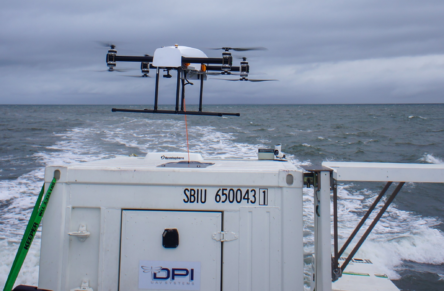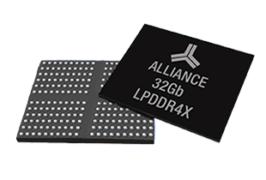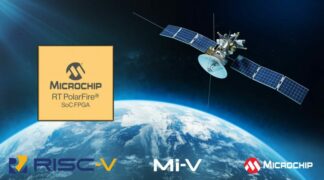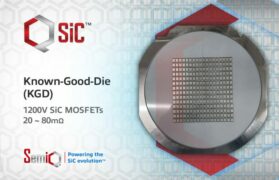Fixed-wing drones offer the ability to traverse airspace at high speed, but they are not equipped for applications requiring stationary aerial flight, which is especially important for persistent airborne surveillance and communication applications.
Early experimentation with tethered, unmanned blimps exposed the fundamental challenge which was their relative inability to remain stationary in high-wind conditions. A new approach was needed, and Dragonfly Pictures Inc. (DPI) developed a new class of drone, the hover-in-place tethered drone.
Unlike battery powered multirotor drones which require battery changes every 20 minutes, tethered drones receive their power through an electrical cord connected to a base station. This enables them to stay aloft for hours, even days. DPI’s tethered multi-rotor drones are designed to track and follow mobile host platforms including ships, boats, trucks and other unmanned surface/ground vehicles.
They offer several benefits over fixed-wing drones, including vertical takeoff and landing capabilities. There is no runway, launcher or recovery equipment required. Unlike a blimp, they also offer the ability to achieve persistent, stationary positioning – even during turbulent weather and fast-changing wind speeds.
Tested extensively in real-world operating conditions, their tethered drones are currently being qualified for use by the U.S. Navy in marine/maritime environments for intelligence, surveillance, reconnaissance (ISR), communications and video applications.
Overcoming extreme design challenges
DPI’s military/industrial-grade Unmanned Multirotor Aerial Relay (UMAR) tethered drone is weatherproofed for rain, snow, dust and heat, and is optimized specifically for saltwater marine environments.
UMAR drones are especially beneficial in that they can provide up to 400+ hours of non-stop uptime and operations – at up to 500 feet altitude – because of the continuous power flow through the tether.
But there are significant design challenges inherent to the tethered architecture. The power needs to be delivered from the host vessel to the multirotor drone at extremely high voltage and low current to enable the use of the thinnest, lightest tether, which in turn enables greater drone mobility and larger airborne payloads.
Operating at power levels from 8 to 10kW, the UMAR drones are extremely powerful and ruggedized to maintain persistent stationary positioning under severe maritime storm conditions. This challenge is often compounded by turbulent waters/waves impacting the positioning of the host vessel. The drones therefore require the power capacity and agility to accelerate rotor speeds for lift and yaw in short or prolonged bursts as needed to maintain altitude with instant response time.










